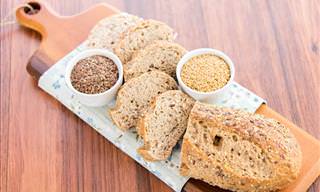The role of carbohydrates
To understand net carbs, it’s important to know the basic functions of carbohydrates first. They are the body’s main source of energy. "Carbohydrates are macronutrients, meaning they are one of the three main ways the body obtains energy or calories," explains Paige Smathers, a registered dietitian.
There are three macronutrients: carbohydrates, proteins, and fats. Macronutrients are essential for the body, and we require large amounts of them. All macronutrients must be obtained through food, as the body cannot produce them on its own.
As we mentioned, carbohydrates are the body’s preferred source of energy. Protein is used to build muscle tissue, and makeup enzymes while fat is utilized for cell growth and energy storage. By eating carbohydrates, we save other macronutrients, and this way proteins and fats can be used for their primary purpose.
Not all carbohydrates are equal
Carbohydrates fall into three categories: starches, sugar, and fiber. Dietary fiber comes from fruits, vegetables, and grains. Fiber is known for its many health benefits, but it cannot be fully digested by the human body. As for sugar, there are naturally-occurring sugars in fruit and milk, as well as added sugar found in processed foods.
Carbohydrates can also be divided into simple and complex. Simple carbohydrates are easily absorbed by the body, and they tend to taste sweeter than their complex counterparts. Fruits, for example, contain a lot of simple carbohydrates, hence their sweet taste. The same is true for honey.
Foods that contain complex carbohydrates, on the other hand, tend to have more fiber. Examples of such foods are potatoes, rice, wheat, squash, and beans.
What are net carbs?
Now that you have a general idea of the role of carbohydrates and their different types, net carbs are easier to define. Net carbs are the actual amount of carbohydrates that your body digests and absorbs from food. They are also sometimes referred to as digestible- or impact carbs.
When you eat carb-rich food, most of the carbs are broken down into individual sugar units with the help of the enzymes produced in your small intestine. Some carbs, however, cannot be broken down into individual sugars, and others can be broken down or absorbed only partially, like fiber and sugar alcohol.
Therefore, to calculate the net carbs you consumed, you can subtract the fiber and sugar alcohol from the total carbohydrates listed on a food label. In whole foods, you would calculate the net carbs by subtracting the fiber from the total amount of carbohydrates.
Related: How to Naturally Stabilize Your Blood Sugar Levels
The pros and cons of counting net carbs
The main advantage of the practice of counting net carbs is that it can promote a higher fiber intake and helps pinpoint a food’s true impact on your blood sugar. Unlike other types of carbs, fiber doesn’t raise your blood sugar much at all. In fact, it slows down the rate of glucose entering the bloodstream. If we eat food that contains a low amount of fiber, that food will be broken down and absorbed more quickly than a high-fiber food, leading to a spike in blood glucose.
Following your net-carb intake leads to an awareness of how much fiber you consume, and thus, it decreases one's blood sugar.

The reason why some nutritionists are against the practice of counting net-carbs is that it's just impossible to get it 100% right. Net carbs are not listed on the Nutrition Facts label, which is regulated by the Food and Drug Administration and found on most foods and beverages. Because they are not standardized, there are simply too many variables that can skew the numbers.
The bottom line is that counting net-carbs can prove beneficial for some, and inconvenient for others. If this practice helps you eat a more fiber-rich diet and manage your blood sugar, that is great. At the end of the day, your health is the top priority.
Share this information with your loved ones
 Go to BabaMail
Go to BabaMail


























